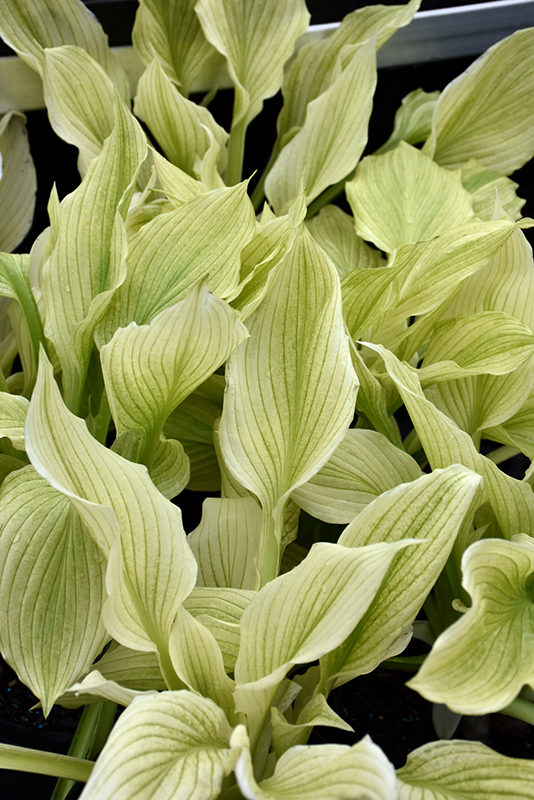Plantfinder
siteadmin2023-06-04T13:10:09-03:00
Height: 14 inches
Spread: 18 inches
Sunlight:
![]()
Hardiness Zone: 2a
Other Names: Plantain Lily, Funkia
Description:
A curious full shade selection with foliage emerging white and maturing to light green and cream; lavender spikes of flowers appear in early to mid summer; a great selection for shady borders, beds and containers
Ornamental Features
White Feather Hosta features dainty spikes of lavender tubular flowers rising above the foliage in mid summer. Its attractive small textured oval leaves emerge white in spring, turning creamy white in colour with showy light green variegation throughout the season.
Landscape Attributes
White Feather Hosta is a dense herbaceous perennial with tall flower stalks held atop a low mound of foliage. Its relatively fine texture sets it apart from other garden plants with less refined foliage.
This is a relatively low maintenance plant, and is best cleaned up in early spring before it resumes active growth for the season. Gardeners should be aware of the following characteristic(s) that may warrant special consideration;
- Insects
White Feather Hosta is recommended for the following landscape applications;
- Mass Planting
- General Garden Use
- Groundcover
Planting & Growing
White Feather Hosta will grow to be about 12 inches tall at maturity, with a spread of 18 inches. Its foliage tends to remain dense right to the ground, not requiring facer plants in front. It grows at a slow rate, and under ideal conditions can be expected to live for approximately 10 years. As an herbaceous perennial, this plant will usually die back to the crown each winter, and will regrow from the base each spring. Be careful not to disturb the crown in late winter when it may not be readily seen!
This plant should only be grown in a shady location. It prefers to grow in average to moist conditions, and shouldn't be allowed to dry out. This plant should not require much in the way of fertilizing once established, although it may appreciate a shot of general-purpose fertilizer from time to time early in the growing season. It is not particular as to soil type or pH. It is somewhat tolerant of urban pollution. This particular variety is an interspecific hybrid. It can be propagated by division; however, as a cultivated variety, be aware that it may be subject to certain restrictions or prohibitions on propagation.
A NetPS Plant Finder tool
